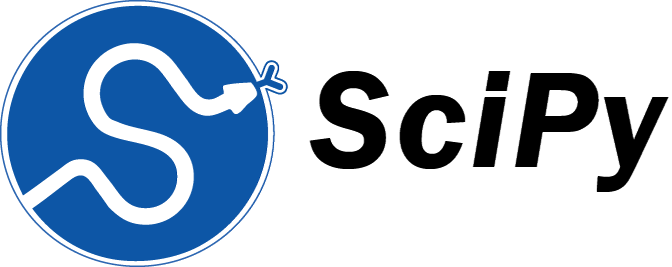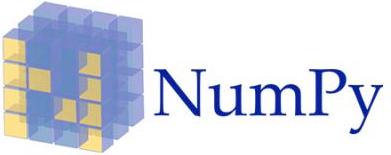SciPy and NumPy
SciPy is a collection of open source code libraries for math, science and engineering. NumPy, Matplotlib and pandas are libraries that fall under the SciPy project umbrella.

NumPy (source code) is a Python code library that adds scientific computing capabilities such as N-dimensional array objects, FORTRAN and C++ code integration, linear algebra and Fourier transformations. NumPy serves as a required dependency for many other scientific computing packages such as pandas.

Blaze is a similar, but separate, ecosystem with additional tools for wrangling, cleaning, processing and analyzing data.
SciPy resources
Take a look at the pages on Matplotlib and pandas for tutorials specific to those projects. The following resources are broader walkthroughs for the SciPy ecosystem:
-
SciPy Lecture notes goes into the overall Python scientific computing ecosystem and how to use it.
-
The SciPy Cookbook contains instructions for various SciPy packages that were previously hosted on the SciPy wiki.
-
Robots and Generative Art and Python, oh my! uses Scipy, Numpy, and Matplotlib to generate some nice looking art that can even be written to paper using a plotter. This is a very cool example project that ties together the scientific world and the art world.
-
A plea for stability in the SciPy ecosystem presents concerns from one scientist's perspective about how fast the Python programming ecosystem changes and that code can become backwards incompatible in only a few years. The issue is that many science projects last decades and therefore cannot follow the rate of change as easily as typical software development projects.
NumPy resources
-
From Python to NumPy is an awesome resource that shows how to use your basic Python knowledge to learn how to do vectorization with NumPy.
-
The ultimate beginner's guide to NumPy explains how to install and import NumPy, then digs into using arrays for computation and how to perform operations that get the results you need for your data analysis.
-
Scientific Computing in Python: Introduction to NumPy and Matplotlib is a detailed tutorial that goes through the basics for NumPy and then connects it to Matplotlib.
-
Math to Code provides an interactive tutorial to learn how to implement math in NumPy.
-
101 NumPy Exercises for Data Analysis has a bunch of questions and answers to common ways to work with NumPy and is useful to understand what you can do with this library.
-
NumPy: creating and manipulating numerical data contains many code examples for common operations.
-
Python NumPy Array Tutorial is a starter tutorial specifically focused on using and working with NumPy's powerful arrays.
-
Beyond Numpy Arrays in Python is a predecessor to a Numpy Enhancement Proposal that recommends how to prepare the scientific computing ecosystme for GPU, distributed and sparse arrays.
-
Probability distribution explorer contains graphs for understanding how different probabilities look when plotted. There is also code for implementing the visuals in NumPy and SciPy.
Example NumPy code
-
SmoothLife is an implementation of Conway's Game of Life using NumPy. The project uses a continuous space rather than the traditional discrete board.
-
Advanced Numpy Techniques is a Jupyter Notebook with code on beyond-the-basics NumPy features.
What else would you like to learn about Python and data?
Full Stack Python
Updates via Twitter & Facebook.